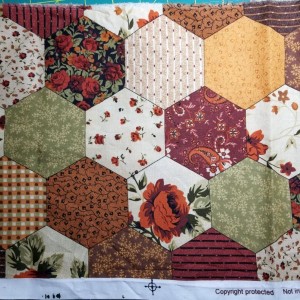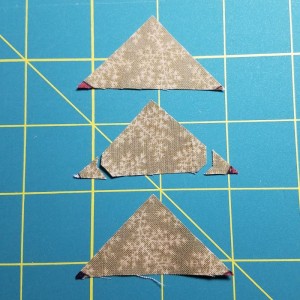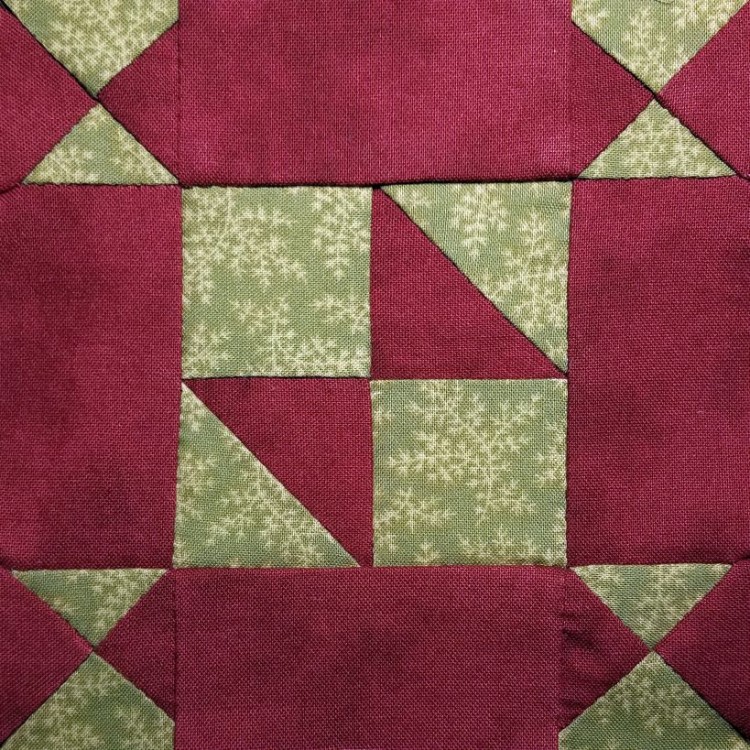The green fabric in this block had a surprising source:

This kind of fabric is called “cheater fabric” by some quilters. The fabric is preprinted to look like a patchwork design, so you don’t have to put all that effort into piecing together the quilt … you just sandwich together the preprinted top, the batting, and the backing fabric, then start quilting.
Some quilters can be pretty disdainful of cheater quilts, but it seems to me like a good way to get started in the craft. I heard someone else refer to cheater quilts as “convenience quilts”, which sounds much less judgmental.
At any rate, I was looking for more medium green fabrics, and I came across a small piece of this “convenience” fabric at a Seattle ReCreative sale. I thought the green hexagons would fit in nicely with my other green fabrics. The piece I bought had five and a half green hexagons, so I thought if I was careful to pick a block without super huge pieces, I would have enough to make one block with it.
My Mom, who didn’t grow up in the Great Depression (although you’d never know it), has a favorite saying: “Use it up, wear it out, make it do, or do without!” … so I was feeling super thrifty, using up this fabric I got as part of a $1 bag of scraps.
Since I just had a small piece of it, with no indication of the fabric content, I did a burn test to determine what kind of fabric it was.
Burning a small piece of the fabric can be a great way to determine what a mystery piece of fabric is made of. In general terms, if it burns up and turns in to ash, it is probably a natural fiber (like cotton), and if it melts into hard little balls, it is probably a synthetic fiber (like polyester). There are, of course, far more specifics than this simplified explanation covers. If you’re interested, google “fabric burn test” and you’ll find detailed information, including videos and flowchart-style diagrams.
I tested with a piece of one of the brown hexagons (the green ones were at a premium!), and the piece burned completely, turning to light-colored ash, and smelled like burning paper. Definitely cotton, which was just what I’d hoped for.
Cutting out the pieces was tricky, since I was limited to hexagon-shaped chunks that were 3.5″ wide at their widest point. There were a few instances where a little bit of the non-green fabric made it on to the cut piece, but in all cases the non-green was hidden in the seam allowance or even trimmed off the piece before stitching:

The actual sewing together of the pieces went pretty quickly, although finding the time to sit down and sew for a few minutes was not so easy. I definitely appreciate the need for “convenience” quilting projects.
Today I’ve been admiring this person’s interpretation of the Dear Jane quilt pattern, where all the blocks are shades of the same color, and the quilting is the star of the quilt. At the rate I’m going, I estimate it will be at least six more years until I have all the blocks pieced and sewn together, and am ready to start quilting. Those cheater fabrics are looking pretty good right about now.
